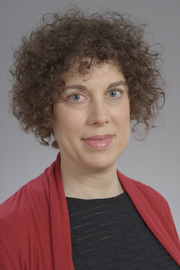
The Gordon lab is interested in the mechanisms by which sensory signals are converted into messages than can be understood by the brain. Very different types of sensory stimuli - the packet of energy contained within a photon, the chemicals that make up odors, and changes in temperature, for example - must all be converted into an electrical signal that can be carried along neurons to be processed by the brain. Not surprisingly, the link between signal transduction cascades and the requisite changes in membrane potential is mediated by members of a related family of ion channel proteins. The lab seeks to understand how signal transduction cascades provide the energy that controls this family of ion channels.
Ion channels are enzymes that permit the flow of charged ions from one side of a cell membrane to another. Through sophisticated, low-noise recording procedures, the flow of current through an individual ion channel molecule in real time can be measured. By altering the environmental conditions on a selected side of the membrane, the sensory stimuli that normally activate these enzymes can be mimicked and the effects of different conditions on their behavior can be measured. The Gordon lab is particularly interested in the molecular mechanisms by which an ion channel can integrate disparate sensory signals, such as heat, acidity, and "painful" chemicals. Using a combination of molecular biology, biochemistry, and electrophysiology the lab aims to understand the structural basis for the function of these channels and how they integrate into the sensory transduction systems in various cell types.
Source: https://depts.washington.edu/pbiopage/directories/faculty/entry/sgordon/